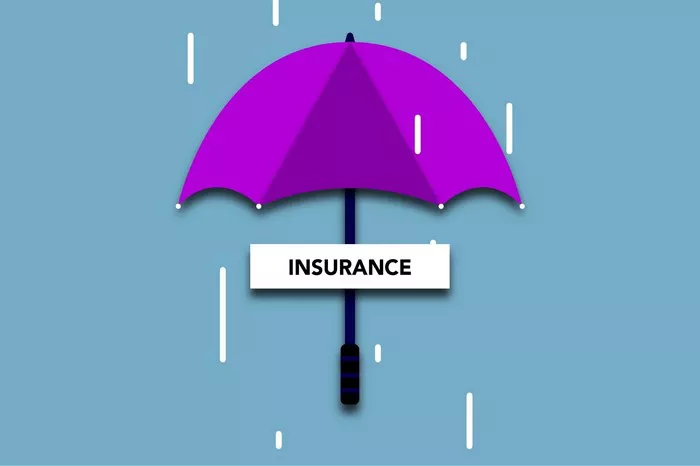In the complex world of insurance, a blanket insurance policy offers a unique and comprehensive form of coverage. It is designed to protect a group or a collection of assets, often providing a broad scope of protection under a single policy. This type of insurance is popular among businesses and individuals who have multiple items or a diverse range of exposures that need to be safeguarded. Understanding what a blanket insurance policy covers is essential for anyone considering this form of insurance protection. It can provide peace of mind and financial security in the face of various risks and uncertainties.
Definition and Basics of a Blanket Insurance Policy
A blanket insurance policy is an insurance contract that provides coverage for a group of assets or a variety of risks without specifically itemizing each one. Instead of having separate policies for each individual item or risk, a single blanket policy is used. For example, a business might have a blanket insurance policy that covers all of its inventory, equipment, and buildings. This means that rather than having one policy for the warehouse building, another for the manufacturing equipment, and a third for the stock of goods, a single policy takes care of them all. The advantage is simplicity and potentially more comprehensive protection. It allows for a more holistic approach to insuring multiple assets or risks that are related in some way.
Coverage for Property
1. Buildings and Structures
One of the main areas of coverage under a blanket insurance policy is buildings and structures. Whether it’s a commercial office building, a factory, a warehouse, or a residential complex, the policy can protect against various perils. For example, if a fire breaks out in a business’s warehouse, the blanket policy would cover the cost of repairing or rebuilding the damaged structure. This includes not only the physical building materials like the walls, roof, and foundation but also any fixtures or improvements that are part of the building. So, if there were special loading docks, elevator systems, or built-in shelving units, they would also be covered. The policy would typically cover damages caused by fire, lightning, windstorms, hail, and other natural disasters. In case of a severe storm that causes the roof to be damaged or a wall to collapse, the insurance would step in to pay for the necessary repairs or reconstruction.
2. Business Contents and Inventory
Businesses also rely on blanket insurance to cover their contents and inventory. This includes everything from office furniture, computers, and machinery to the stock of products that they sell. For instance, if a retailer has a blanket policy and a flood damages their store’s inventory of clothing and electronics, the insurance will cover the cost of replacing the damaged goods. The same goes for a manufacturing company whose raw materials or finished products are destroyed by a fire. The policy will reimburse the business for the value of the lost inventory, allowing them to restock and continue operations. It also covers theft of business contents. If burglars break into an office and steal computers and other equipment, the blanket insurance policy would pay for the replacement of those items.
3. Personal Property in a Home or Residence
For homeowners, a blanket insurance policy can cover all of their personal property within the home. This means that furniture, appliances, clothing, electronics, and other household items are protected. If a homeowner’s refrigerator breaks down due to a mechanical failure and needs to be replaced, the policy might cover the cost, depending on the terms. Or if a burglary occurs and jewelry, electronics, and other valuables are stolen, the insurance can provide compensation. It gives homeowners a sense of security knowing that a wide range of their personal possessions are covered under a single policy, rather than having to insure each item separately.
Liability Coverage
1. General Liability
Blanket insurance policies often include general liability coverage. This protects the insured against claims for bodily injury or property damage caused by their operations or activities. For example, if a customer slips and falls in a store that has a blanket insurance policy, and suffers an injury, the policy will cover the cost of any medical expenses, legal fees if the customer sues, and any settlement or judgment amounts. The same applies to a contractor who is working on a construction site and accidentally damages a neighboring property. The general liability portion of the blanket policy would handle the costs associated with repairing the damaged property and any legal claims that might arise. It provides a safety net for businesses and individuals in case they are held liable for accidents or damages that occur in the course of their normal activities.
2. Product Liability
For businesses that manufacture or sell products, product liability coverage within a blanket insurance policy is crucial. If a defective product causes harm to a consumer, the policy will cover the costs. For instance, if a toy manufacturer produces a toy with a small part that detaches and causes a choking hazard to a child, and the parents sue, the blanket insurance policy’s product liability coverage would pay for the child’s medical expenses, any legal costs, and potential damages awarded. It protects the business from the financial consequences of product-related lawsuits and helps maintain the company’s reputation and financial stability.
3. Professional Liability
Professionals such as doctors, lawyers, accountants, and architects can also benefit from professional liability coverage in a blanket insurance policy. If a doctor makes a medical error that results in harm to a patient, or a lawyer gives incorrect legal advice that causes a client to suffer financial losses, the professional liability portion of the policy will cover the costs of any legal claims and settlements. This is especially important as professionals face the risk of malpractice claims, and having this coverage can help them continue their practice without the fear of financial ruin due to a single mistake.
Business Interruption Coverage
Business interruption coverage is another important aspect of many blanket insurance policies. When a covered event, such as a fire, flood, or natural disaster, causes a business to temporarily cease operations, this coverage helps. For example, if a restaurant is damaged by a fire and has to close for several months for repairs, the business interruption coverage will pay for the lost income during that period. It also covers ongoing expenses like rent, utilities, and employee salaries that the business still has to pay even though it’s not generating revenue. This allows the business to survive the interruption and reopen once the repairs are complete. Without this coverage, many businesses would struggle to recover financially after a major disaster and might be forced to close permanently.
Special Considerations and Exclusions
1. Policy Limits and Deductibles
Like all insurance policies, blanket insurance policies have policy limits and deductibles. The policy limit is the maximum amount that the insurance company will pay out for a covered claim. For example, a business might have a blanket policy with a $1 million limit for property damage. If a covered event causes $1.5 million in damage, the insurance company will only pay up to the $1 million limit. The deductible is the amount that the insured must pay out of pocket before the insurance coverage kicks in. So, if a business has a $10,000 deductible and suffers a $50,000 loss, the business would pay the first $10,000, and the insurance company would cover the remaining $40,000. It’s important for policyholders to understand these limits and deductibles to ensure they have the right level of protection and are prepared to cover any out-of-pocket costs.
2. Exclusions
There are also certain exclusions in blanket insurance policies. For example, most policies do not cover losses due to war or acts of terrorism. If a business is located in an area that experiences a terrorist attack and suffers damage, the blanket insurance policy might not provide coverage. Similarly, losses due to intentional acts of the insured are usually excluded. If a business owner deliberately sets fire to their own building to collect insurance money, the claim will be denied. Additionally, some policies might exclude coverage for losses due to wear and tear or gradual deterioration. If a roof leaks due to normal aging and not a sudden covered event like a storm, the insurance might not pay for the repairs.
3. Geographical Coverage
Blanket insurance policies may have limitations on geographical coverage. Some policies might only cover assets or risks within a specific region or country. For example, a business with operations in multiple countries might need to ensure that its blanket policy covers all of its international locations if that’s its intention. If a policy only covers assets in the United States and a business has a manufacturing plant in Europe that suffers damage, the policy might not provide any coverage. It’s important to review the geographical scope of the policy to make sure all relevant assets and risks are protected.
Claims Process
When a claim needs to be made under a blanket insurance policy, the process typically involves several steps. First, the insured must notify the insurance company as soon as possible after the loss or incident occurs. They need to provide detailed information about what happened, including the date, time, location, and a description of the damage or loss. For example, if a business has a fire, they should report it to the insurance company immediately and provide details like the extent of the fire damage to the building and inventory. The insurance company will then assign an adjuster to investigate the claim. The adjuster will assess the damage, review any relevant documentation such as police reports (in case of theft or vandalism), and determine the amount of the loss. Based on this investigation, the insurance company will decide whether to approve the claim and, if so, how much to pay out. The insured may need to provide additional information or documentation during the process, such as receipts for damaged inventory or estimates for repairs.
Conclusion
A blanket insurance policy offers a wide range of coverage that can be beneficial for both businesses and individuals. It provides protection for multiple assets, including buildings, inventory, and personal property, as well as liability coverage and business interruption protection. However, it’s important to understand the specific details of the policy, such as the coverage limits, deductibles, exclusions, and geographical scope. By carefully reviewing and understanding what a blanket insurance policy covers, policyholders can make informed decisions and ensure they have the right level of protection for their assets and operations. It gives them the peace of mind to focus on their core activities, whether it’s running a business or maintaining a household, knowing that they are financially protected against a variety of risks and uncertainties.
Related topics:
































